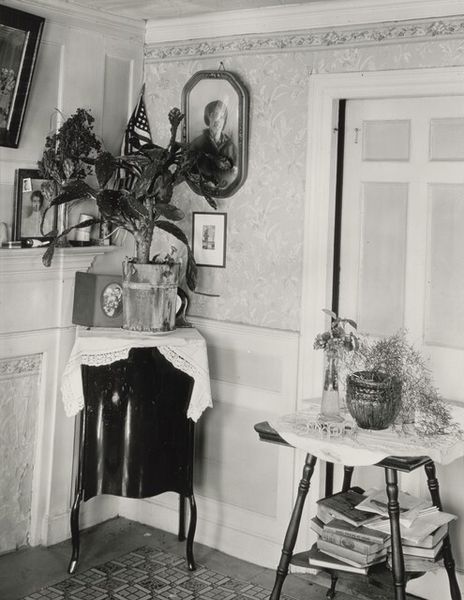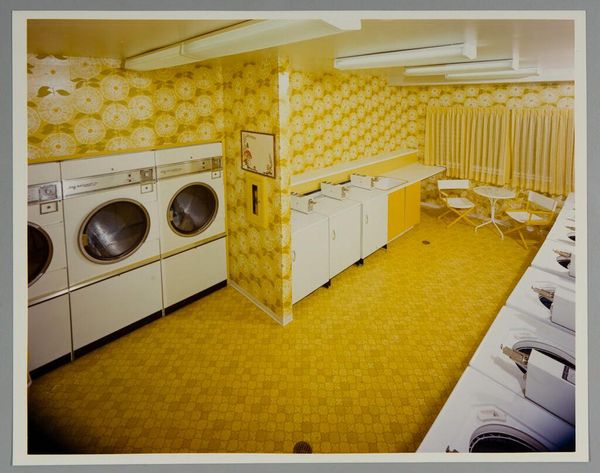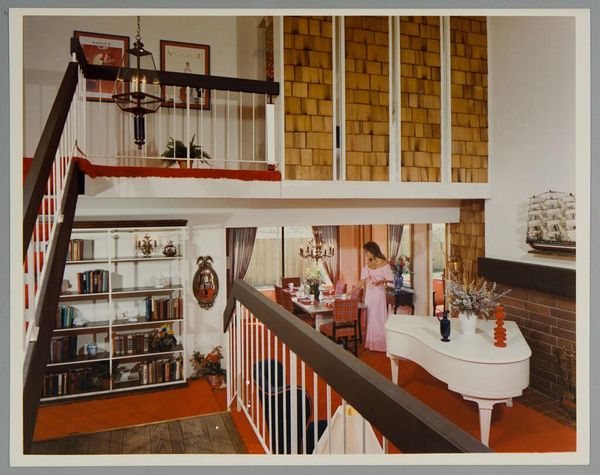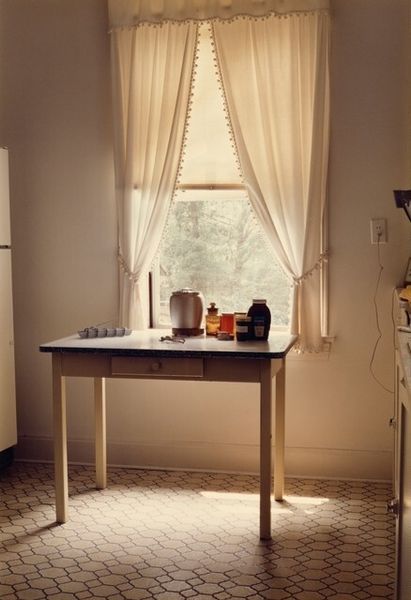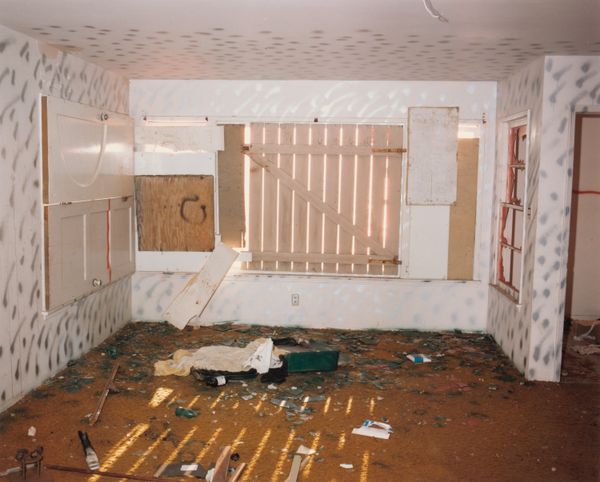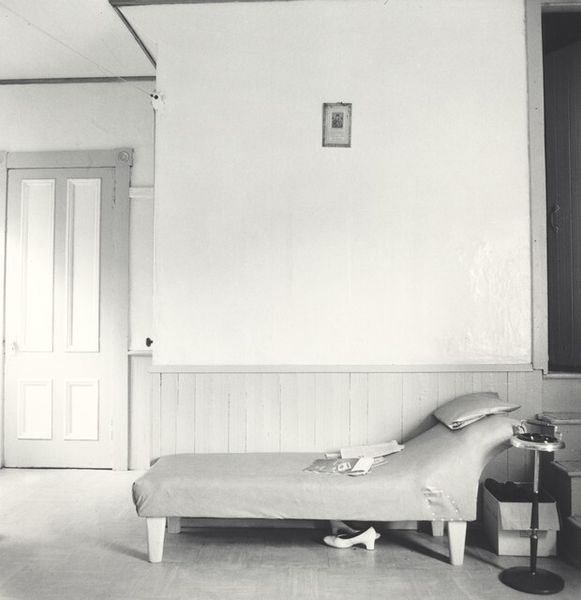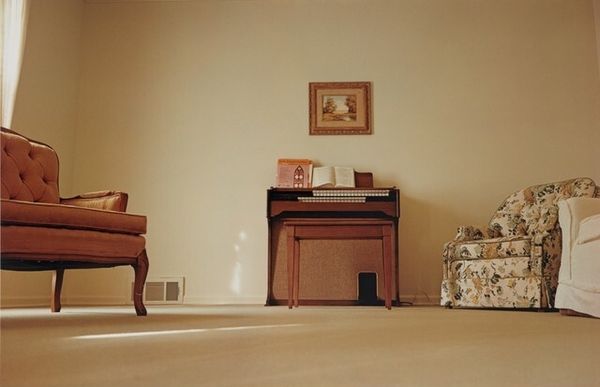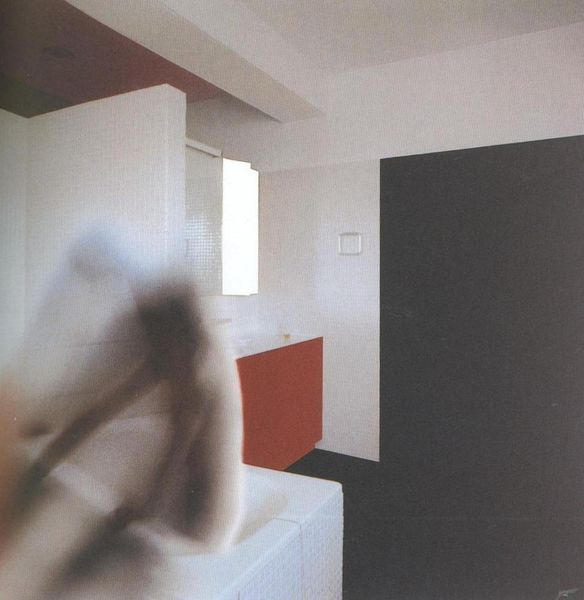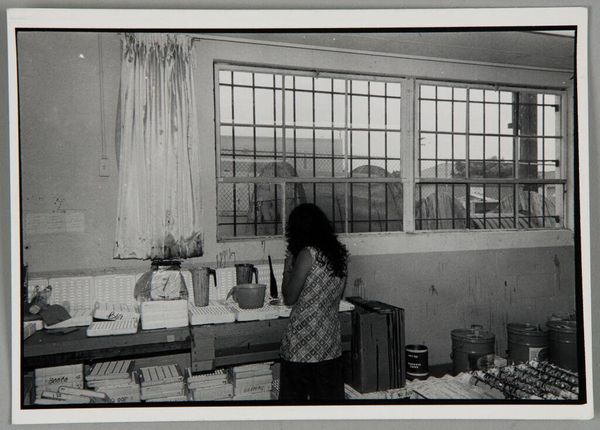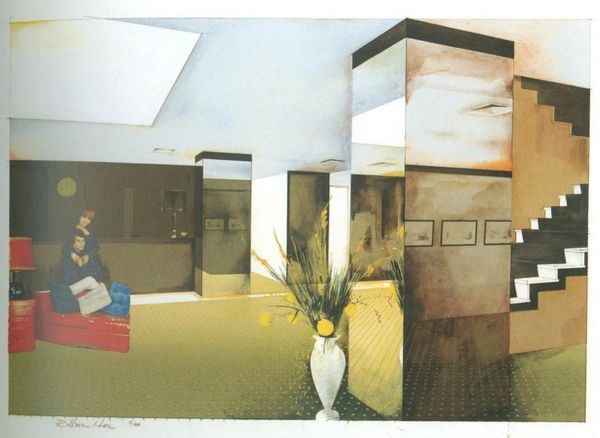
mixed-media, collage, paper, installation-art
#
mixed-media
#
collage
#
conceptual-art
#
paper
#
geometric
#
installation-art
#
line
#
modernism
Copyright: Daniel Buren,Fair Use
Curator: Daniel Buren’s “Papiers collés blanc et vert,” created in 1969, is a key example of his early explorations into conceptual and site-specific art using seemingly simple materials. My immediate reaction is one of stark simplicity, and an unexpected tension between the stripes and the domestic setting they disrupt. It feels both graphic and strangely intimate. Editor: Disrupt is a key word. Look how Buren uses these ubiquitous striped papers, these readymade industrial materials, to intervene directly in architectural space. His application, as you pointed out, creates a really potent friction between the supposed neutrality of minimalist aesthetics and the existing structures they engage with. It makes us ask: what labour goes into the making of these works and how do we see this applied into our domestic surroundings? Curator: Absolutely. Consider the period – the late '60s were a time of massive social upheaval. Buren's repeated vertical stripes, which would become his signature, can be read as a deliberately disruptive gesture. He challenged notions of artistic authorship and the very nature of what constitutes an artwork. It refuses the visual language of traditional painting, denying any sort of personal expression of the artist and its traditional framework. Editor: Indeed. He's divesting art of its aura by emphasizing its material basis. This particular iteration in a domestic space also makes a powerful comment on production and consumption. Are these stripes decorative or subversive? Curator: That tension is central to understanding Buren’s work. The institutional critique, his relentless focus on context, forces us to confront the ideological underpinnings of the art world. I think one could even interpret the wallpaper as a sort of cage, hinting at larger systems of control that work at all levels in social and political issues. Editor: I think looking at Buren’s strips within an architecture allows one to think critically not just about the gallery or domestic context but also about the broader socio-economic structure. Curator: Looking at this installation has been a good reminder of how seemingly minimal gestures can carry complex meaning about the relationship between art, space, and society. Editor: Yes. Buren's precise application of the paper activates not just the room, but the entire act of perceiving and understanding. I will never look at stripes the same way again!
Comments
No comments
Be the first to comment and join the conversation on the ultimate creative platform.
